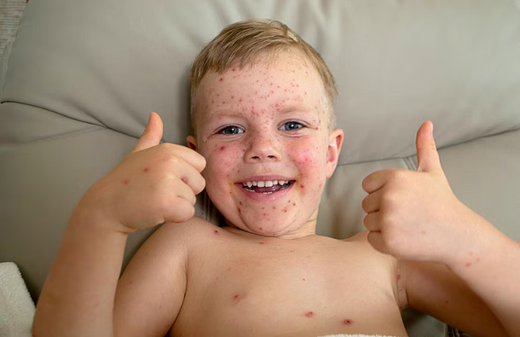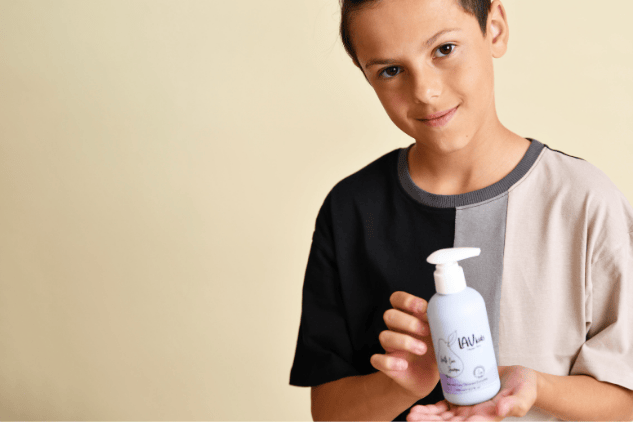
How Can I Prevent My Child's Facial Psoriasis?
Psoriasis on face is quite a common concern. This is a chronic autoimmune condition, often triggered by an overactive immune response that accelerates skin cell production. Specifically, skin cells are rapidly produced, leading to inflammation and scaling. Thick and scaly patches on the skin are quite common in this condition.
Since psoriasis has roots in hereditary and genetic concerns, the ailment may be passed on to your child. Worry not! The commonality of facial psoriasis has led to the rise of various medical interventions to control it. While the condition cannot be fully cured, certain strategies allow for a normal quality of life. Read on to learn all you need to know about psoriasis in kids!
Key Takeaways
- Psoriasis is an autoimmune disease where the immune system makes an error and attacks healthy skin cells.
- This is a lifelong condition with no known cure. However, it can be controlled via medical care and lifestyle management.
- Psoriasis is not infectious as there are no parasites involved.
- Stress, other infections, skin injuries, and a bad lifestyle are common triggers of psoriasis.
- Commonly, facial psoriasis appears as red inflamed patches covered with silvery-white scales.
Psoriasis on the Face (Facial Psoriasis)
Since psoriasis is a genetic and hereditary concern, it is possible that the ailment manifests itself in kids. This is both challenging and worrying. After all, a child’s skin is susceptible; it has yet to build up the defences that protect it from normal environmental stressors. A condition like psoriasis on face tends to significantly stress the health of the skin and can exacerbate other skin conditions.

Symptoms of Facial Psoriasis in Kids
- Eyelids: Often appear red and swollen. Crusting is common around eyelid edges.
- Eyes: Dry, inflamed, and very irritated eyes. Vision difficulties are possible in severe cases.
- Ears: Red patches and scaling around and inside ears. In severe cases, scales build up and block the ear canal.
- Mouth: Peeling and crusting in and around the mouth leads to discomfort during eating and speaking.
- Gums or Tongue: Often enters the territory of oral concerns as gums and tongue become red with sores.
- Cheek: Most common, involved red and scaly patches accompanied by a burning sensation.
- Nose: Scaly and red skin around the nose. Scale buildup leads to crusting.
- Lips: Redness and scaling around the lips are accompanied by the lips themselves becoming dry and cracked.

Treatments for Psoriasis in Children
As mentioned before, there is unfortunately no known cure for facial psoriasis yet. This is often a major challenge with any genetic or autoimmune disorder. However, medical science and research have progressed to an extent where this condition can be curbed and controlled with a great degree of effectiveness. Here’s how psoriasis in kids can be handled.
Topical Therapies
These are the first and most preferred treatment options for psoriasis at a young age. Typically, topical corticosteroids are prescribed to reduce inflammation and scaling. Regular moisturising and hydration also help immensely!

Phototherapy
Exposing skin to controlled doses of ultraviolet B (UVB) light has shown to be very effective. This is because UVB light slows down overproducing skin cells.
Medications
In severe cases, thorough medication has shown to be very effective! A common prescription is methotrexate, capable of reducing immune system activity.
Diet
The best strategy for all-around care is incorporating anti-inflammatory foods, i.e., those rich in omega-3 fatty acids. This usually involves fish, whole grains, and certain vegetables.
When To Contact A Doctor?
After initially diagnosing facial psoriasis and prescribing medication, this condition should not bother your child frequently. However, certain situations do warrant an immediate doctor visit. If psoriasis flare-ups have suddenly increased, or treatment effectiveness has reduced, it’s best to have a doctor re-assess the condition. Additionally, be on the lookout for any changes in vision in case of eyelid psoriasis. This requires an eye specialist and dermatologist’s attention.

Final Thoughts
While psoriasis on face might seem like a severe condition, it’s important to know the true extent of it. Some care and attention can manage psoriasis completely, making it a minor worry instead of a major concern. Once your child has incorporated the healthy habits necessary to manage psoriasis, they are likely to continue them well into adulthood. As a parent, all you need to do is be on the lookout for common signs and symptoms and help your child out with any medical requirements!



